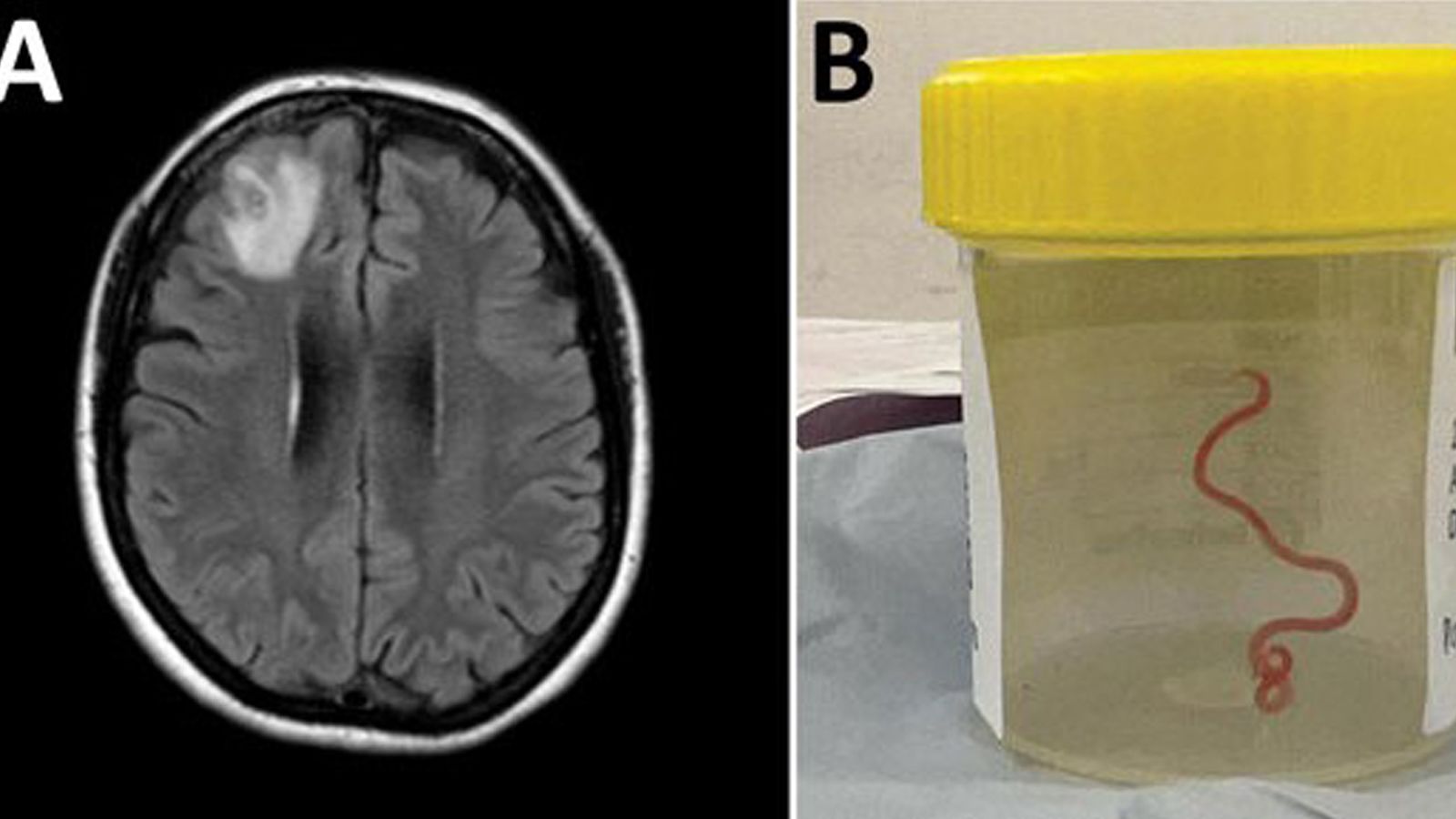
Doctors Discover First-Ever Live Worm Found in a Human Brain: A Historic Medical Case in Australia
Doctors Discover First-Ever Live Worm Found in a Human Brain: A Historic Medical Case in Australia
In 2021, doctors in Australia made a medical discovery so shocking that it sounded almost unbelievable: they removed a live, wriggling worm from a woman’s brain — the first documented case in human history. The findings were later published in the prestigious journal The Lancet Infectious Diseases, confirming the case as a world-first and highlighting the importance of understanding emerging zoonotic infections.
(Sources: The Lancet Infectious Diseases, BBC News, CNN Health)

Months of Mysterious Symptoms Before the Discovery
The patient, a 64-year-old woman from New South Wales, had been experiencing a series of unexplained symptoms for more than a year. These included:
-
Memory loss
-
Depression
-
Persistent fatigue
-
Abdominal discomfort
-
Chronic coughing
As her health continued to decline, doctors ordered a detailed brain scan, which revealed an unusual lesion. What they found next stunned even experienced specialists.
The 8 cm Parasite Found Moving Inside Her Brain
During surgery, neurosurgeon Dr. Hari Priya Bandi made a historic discovery: an 8-centimeter (3-inch) live parasitic worm actively moving inside the patient’s brain tissue. This parasite was later identified as Ophidascaris robertsi, a roundworm species that typically infects carpet pythons, not humans.
(Sources: The Guardian, BBC News, Australian National University)
This unusual finding raised immediate questions about how a parasite normally restricted to reptiles could infect a human being.
How Did the Infection Happen?
Medical experts believe the woman became infected after collecting and eating wild leafy greens, which may have been contaminated with python feces containing the parasite’s eggs. Once consumed, the eggs hatched into larvae inside her body.
From there, the larvae traveled through various organs, eventually reaching the brain, where they triggered inflammation, neurological problems, and the worsening symptoms she experienced for months.
(Source: CNN Health)
This case serves as a powerful example of how human contact with wildlife — especially in environments where animals shed infectious material — can sometimes lead to rare and unexpected cross-species infections.
A Medical First with Global Significance
This is the first recorded instance of Ophidascaris robertsi infecting a human brain. The discovery has opened new discussions among scientists and infectious disease experts about:
-
How environmental changes can shift parasite behavior
-
How increased human-wildlife interactions raise infection risks
-
The likelihood of more rare or emerging zoonotic diseases in the future
Researchers warn that as ecosystems evolve and humans encroach on wildlife habitats, unusual parasitic infections could become more frequent — making surveillance and early diagnosis crucial.
The Woman’s Recovery and a Cautionary Lesson
Fortunately, the patient survived the ordeal and is currently recovering following surgery and medical treatment. Doctors continue to monitor her condition, but removing the worm prevented further damage and may have saved her life.
Her story is a sobering reminder of the delicate relationship between humans, animals, and the environment. Even the smallest organism — like a worm barely a few inches long — has the power to disrupt a life completely.
This extraordinary case reinforces the importance of public health awareness, environmental hygiene, and scientific vigilance in a rapidly changing world.
News in the same category


Why Bees Land on Fresh Laundry: Understanding Their Attraction and How to Prevent It

What Are the “Black Triangles” Between Your Teeth

12-Year-Old Innovator Creates Low-Cost Virus-Removing Air Filter Adopted Across Connecticut

Billionaire Judy Faulkner, 82, Commits to Giving Away 99% of Her $7.8B Fortune

The Curious Story Behind "Ancient Lights" in UK Property Law

From Precarious to Prosperous: Denmark’s Approach to Entry-Level Jobs

California’s Solar-Canal Initiative: A Game-Changer for Clean Energy and Water Conservation

Nevada Teen Shows Extraordinary Love, Buys Mom a Chevrolet Metro

The Greenland Shark: A Creature That May Have Lived Through the 1600s

Steve Ballmer’s $170 Million Annual Commitment to Early Childhood Education in Washington State

Why Germany’s Animal Shelters Are Virtually “No‑Kill” — And How the Law Makes It So

Steven Pruitt and the Power of Volunteer Knowledge

Frisson: The Science and Sensation of Goosebumps from Music and Art

A Ride for Hope: How One Afghan Father Is Transforming His Daughters’ Future

When Life Begins With a Flash: Understanding the Zinc Spark Phenomenon

From Endangerment to Recovery: The Remarkable Journey of the Haleakalā Silversword

Closing Prisons, Strengthening Communities: The Netherlands’ Remarkable Shift
News Post

A Simple Sock Trick to Clean Dusty Window Blinds with Almost Zero Effort

Kamala Harris Sparks National Conversation on Lowering the Voting Age

🧠✨ Stunning MRI Images Reveal the Hidden World of Babies in the Womb

Barrow Enters Extended Polar Night, Offering Insights into Arctic Life and Climate Research

Why Bees Land on Fresh Laundry: Understanding Their Attraction and How to Prevent It

A Common Mistake When Storing Meat in the Fridge Can Spread Bacteria and Cause Food Poisoning

What Are the “Black Triangles” Between Your Teeth

7 Foods That Can Last for Years: Still Safe to Eat Even After the Expiry Date

Roll your feet daily—unlock rapid healing throughout your body!

5 Types of Eggs That May Be Harmful if Eaten Regularly

Cancer cells disappeared after 5 months thanks to consistent medical treatment

Qatar Launches Massive Desalination Plant Producing 600 Million Liters of Fresh Water Daily

My Nana’s 2-Minute Hack to Make a Stainless Steel Sink Shine With Zero Effort

12-Year-Old Innovator Creates Low-Cost Virus-Removing Air Filter Adopted Across Connecticut

The Hidden Risks of Storing Cooked Rice the Wrong Way

The Secret Purpose of the Metal Rods in Car Headrests

Stop Organizing These 10 Things the Wrong Way

California Scientists Grow Fully Functional Human Skin With Sweat Glands for Burn Patients
